Fushimi Inari Shrine (伏見稲荷大社, Fushimi Inari Taisha) is the most important Shinto site in Japan, dedicated to Inari, the God (Kami) of Rice. Fushimi Inari Taisha is located in southern Kyoto at the base of Mount Inari, and it is one of the most visited tourist attractions in the country.
Fushimi Inari Shrine is famous for its thousand torii gates, which form the pilgrimage trails towards the top of Mount Inari. The trail to the top of the mountain (765 feet high) takes around 2-3 hours to hike up and is approximately 2.5 miles long. Along the route, you will encounter many smaller shrines, teahouses and resting areas with dozens of statues of kitsune (foxes).
Read More about Kyoto
- Kikunoi Honten in Kyoto Review
- Best time to visit Kyoto: Month by month break down
- Kyoto vs Osaka: Which is better?
- Ultimate Kyoto 2 day Itinerary for first-timers 2024
- 50 best things to do in Kyoto, Japan
When you are in Kyoto, seeing Fushimi Inari Shrine is an absolute must. This shrine is very old and important, with its earliest structures built in 711. Visiting Fushimi Inari Shrine provides you with a more profound understanding of spirituality in Japan, allowing you to soak in this charming, spiritual and historic destination.
I went to Fushimi Inari recently, during my 3-week Japan trip, and I’ve put together this guide to help you make the most of your visit. I will explain how to navigate the shrine, the best time to visit to avoid the crowds, and offer detailed advice on hiking the trail to have the perfect time at Fushimi Inari Shrine.
Table of Contents
- Best time to visit Fushimi Inari Shrine
- Fushimi Inari Shrine in the morning
- Fushimi Inari Shrine at sunset
- Fushimi Inari Shrine at night
- How to get to Fushimi Inari Shrine
- Fushimi Inari Taisha
- Fushimi Inari Shrine Entry Fee & Opening Hours
- Guide to Fushimi Inari Shrine Grounds
- Reaching Yotsutsuji intersection
- The top of the mountain
- What are the torii gates at Fushimi Inari Shrine?
- What are the foxes at Fushimi Inari Shrine
- Food & Souvenirs
- Where to stay close to Fushimi Inari?
- Tips for visiting Fushimi Inari Shrine
- Visit at Dawn
- Wear Comfortable Footwear
- Prepare for the weather
- Don’t bring luggages
- Bring your camera
- Be respectful
- Frequently Asked Questions
Fushimi Inari Shrine is the main and most important Shinto shrine in Japan. The origins of Fushimi Inari Shrine can be traced back to its establishment in 711 AD on the Inariyama hill, during the Nara period, on the first Horse Day of February.
Over the centuries, the shrine has evolved and gained prominence, eventually being relocated to its present location in 816 AD.
Although there are over 32000 Shinto Shrines dedicated to Inari, Fushimi Inari is the most famous thanks to its Senbon Torii, or “Thousands Torii Gate”. This is a striking pathway of over 10,000 vermilion-painted gates, arranged in successive rows to create a tunnel-like effect above the cobbled path ascending Mount Inari.
Best time to visit Fushimi Inari Shrine
Fushimi Inari Shrine is one of the most visited attractions in Japan, and it does get pretty crowded. Based on my personal experience, the best times to visit Fushimi Inari Shrine to avoid crowds is either first thing in the morning or late at night. The shrine grounds get very busy after 10 am and absolutely packed by lunchtime!
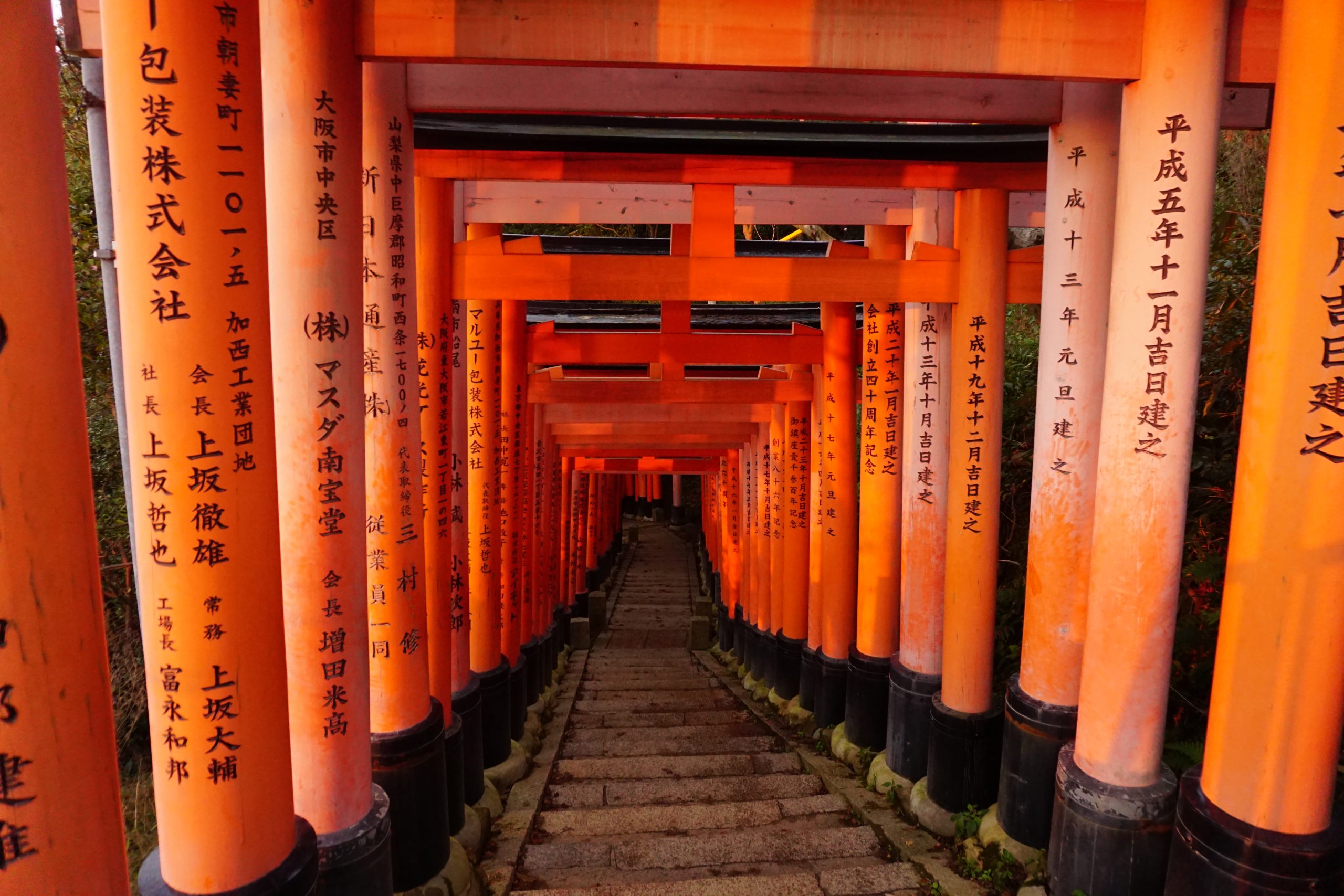
My husband and I visited Fushimi Inari Shrine twice. The first time, we arrived at around 7:00am. Bear in mind that we visited at the beginning of December, so it was a bit colder outside, but the hike was marvelous with barely anyone around. By the time we descended from the mountain just before 9:30 am, most street food stalls around the shrine were open. Perfect timing to grab some street food and a matcha ice cream.
The second time we visited was after dark. The shrine is open 24/7, so you can visit at any time. The hike was a lot more atmospheric and meditative, with absolutely nobody around at all.
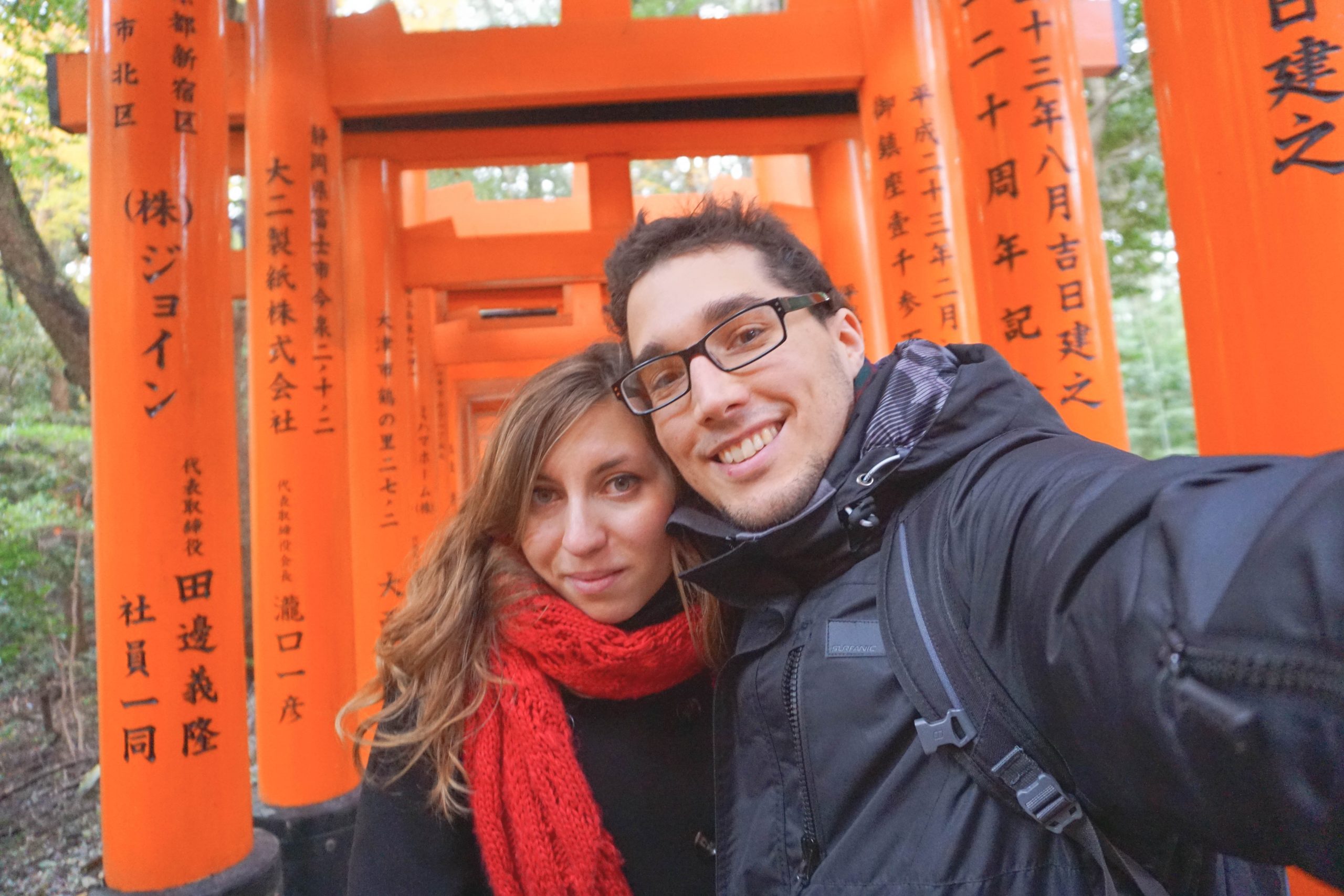
The season of your visit also matters. Fushimi Inari Taisha gets extremely busy during the cherry blossom festival. I recommend visiting towards the end of November/beginning of December, so you can admire the superb colourful autumn leaves, with fewer tourists around.
Throughout the year, Fushimi Inari Shrine hosts various festivals and events. These events celebrate traditions, offer unique performances, and showcase local arts and crafts. It is advisable to check the shrine’s official website or local event calendars to plan your visit accordingly and experience the festivities.
Fushimi Inari Shrine in the morning
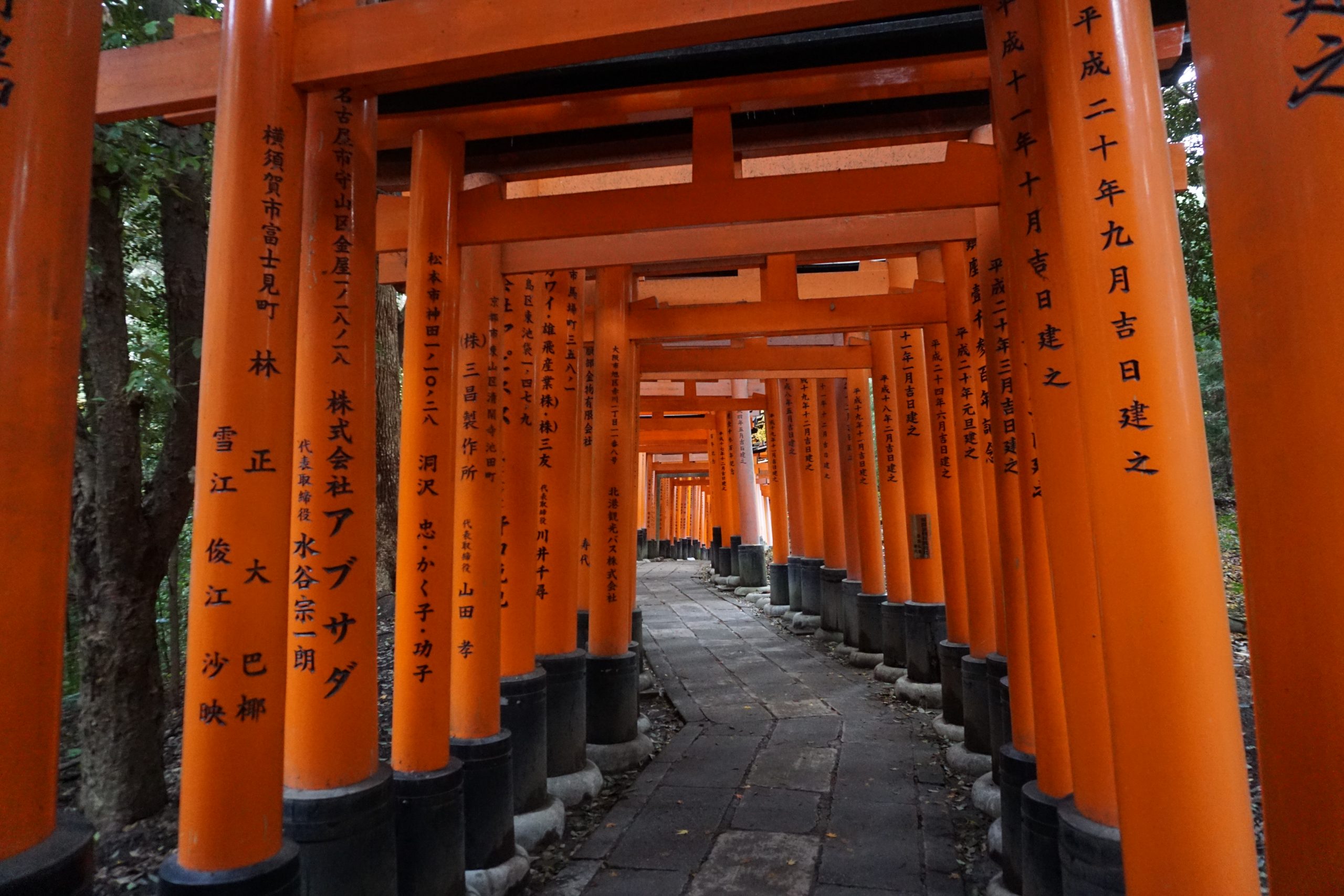
The shrine gets packed by 10am, I advise that you start your visit at 7am or 8am at the very latest. When I arrived at 7 am, there were only a handful of people around. Start the hike early, and you will be rewarded with an empty path leading to the top of the mountain. You will have a lot more opportunities to take pictures of the many small shrines along the way.
Be mindful that dawn in Kyoto can be anytime between 4 am (summer solstice) and 6:30 am (winter solstice). This means that by the time you start your hike at around 7 am, there will already be light. Depending on when you visit, you might even be there on time for a beautiful sunrise.
If you visit Fushimi Inari Shrine in the summer, mornings are cooler and more bearable, with ideal temperatures for a hike. If you visit in the winter, remember that mornings will be colder and crisp. Pay extra attention on the trail to ensure it’s not slippery or icy.
Fushimi Inari Shrine at sunset
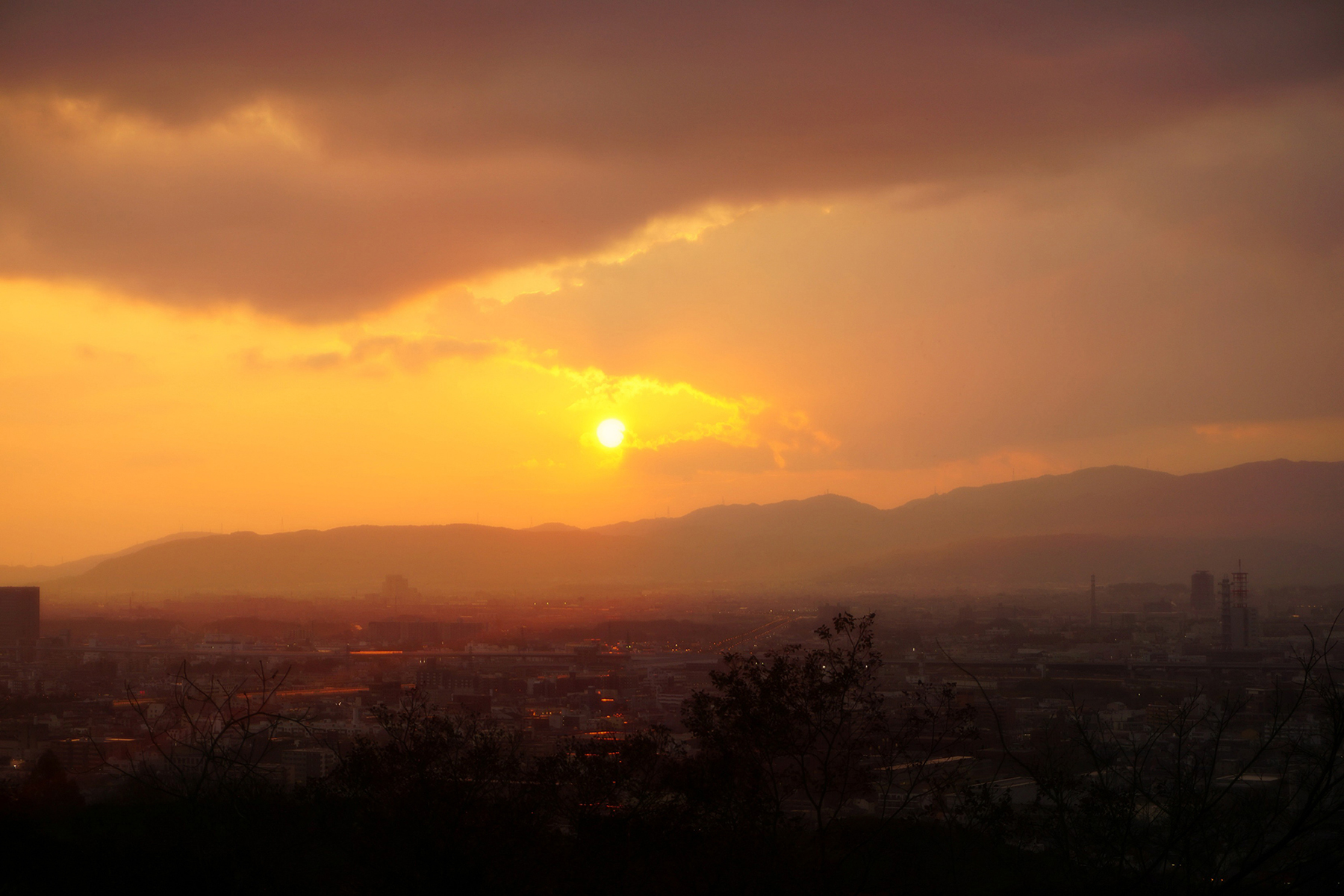
One of the most beautiful times to visit Fushimi Inari Shrine is during sunset. However, that’s usually at a time when there are plenty of people around, so the trail is fairly busy. If crowds do not bother you, this is an excellent time to visit for photography. You will want to time your hike to reach the Yotsutsuji intersection right before sunset.
The Yotsutsuji is roughly halfway up the mountain. Here, you can enjoy some outstanding views over Kyoto. This is also the perfect spot to catch the Fushimi Inari sunset.
Here is how to do it: Type “kyoto sun set” into Google. Time your arrival at the Fushimi Inari Shrine accordingly and remember it takes about 30-45 minutes to reach the Yotsutsuji intersection where you will capture the perfect sunset over Kyoto.
Fushimi Inari Shrine at night
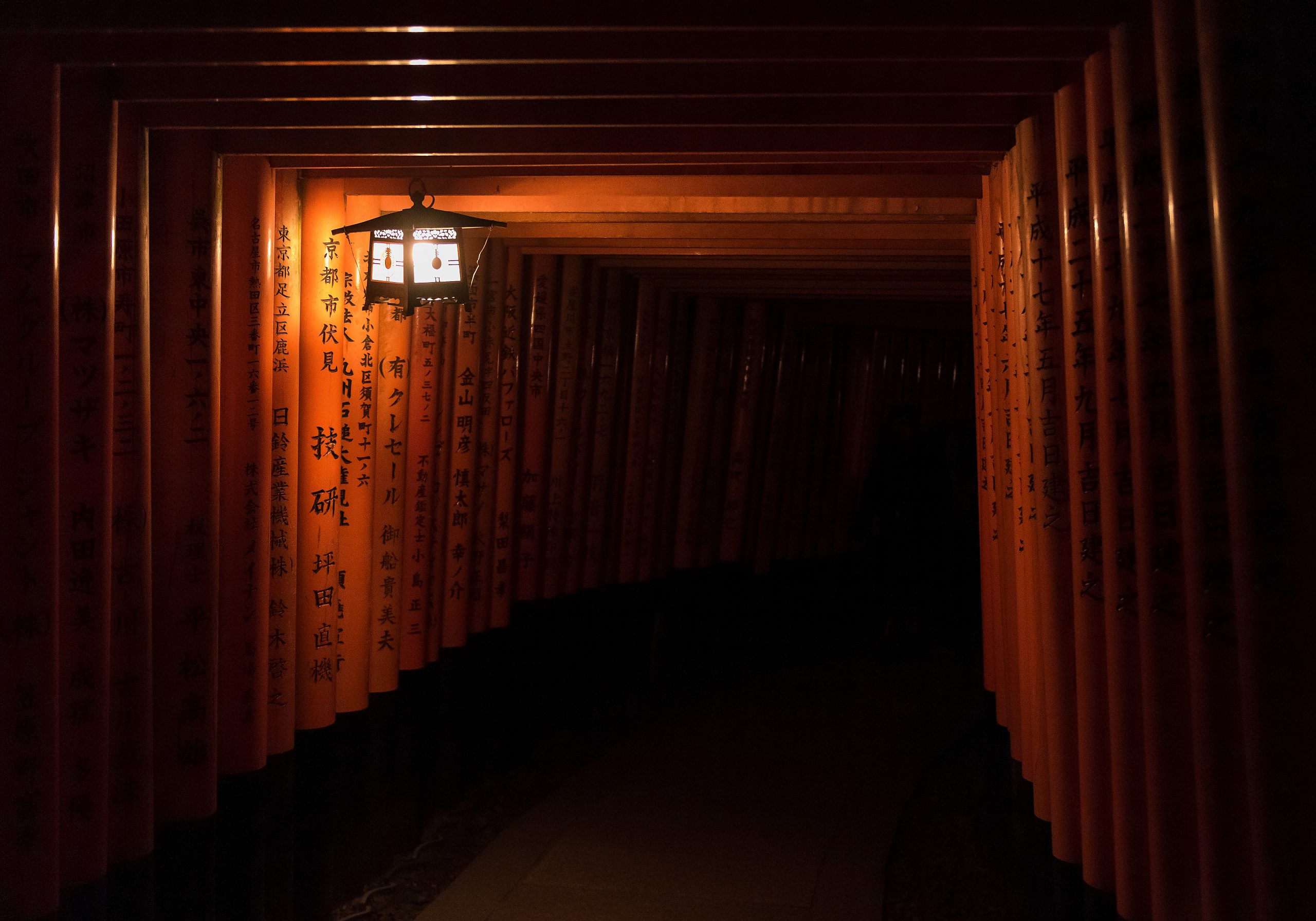
The most unusual and atmospheric time to visit Fushimi Inari Shrine is at night. As it is open 24/7 it’s possible to visit Fushimi Inari Shrine after dark. The vermilion torii gates that line the path leading to Mount Inari are dimly illuminated after sunset, making the trail quite atmospheric.
Together with my husband (hey, I still needed my man with me, even though it’s safe!), I visited Fushimi Inari Shrine mid-December, after 10 pm, and we found our walk to be quiet and very relaxing. I did not find it scary or unsafe in any way, but having my husband as company, did help.
You will need a flashlight, but if you have an iPhone, the flashlight feature on your phone is more than enough to light the path. It’s a walk through dark forests, after all.
There are beautiful Japanese lanterns at every few steps of the way along the path. The lanterns guided us through the shrine grounds and through the torii gates at night. While the shrine is a safe place, I recommend that you stay on the designated trails and be aware of your surroundings.
Safety Tip: There can be wild boars around Fushimi Inari Shrine at night, so make sure to not venture off trail. Although boar encounters are rare, exercising caution and staying on the designated paths can help ensure a safe visit. There are some deer too, although they are harmless.
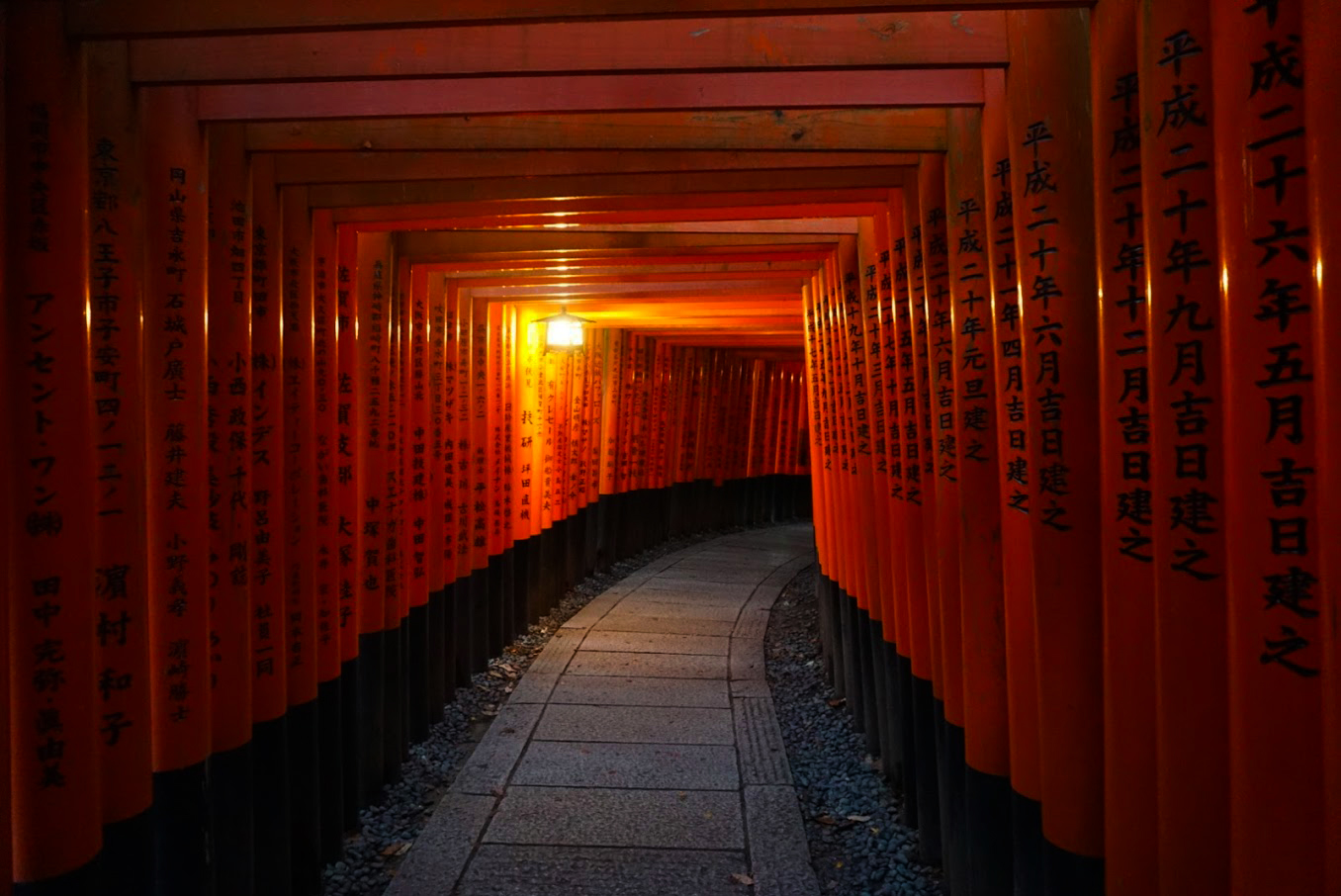
We only met the furry residents of the Fushimi Inari Shrine at night, the cats, which come out at night hunting and playing between the torii gates.
Not going to lie, taking pictures of Fushimi Inari Shrine at night is a bit difficult. If that’s your aim, have a good quality camera with you so you can snap pictures in low light, and a tripod is a must.
There is sufficient light for you to navigate Fushimi Inari Shrine at night safely while preserving the mystical allure of the nighttime experience. If you love a good adventure, Fushimi Inari at night offers a transformative experience that truly sets it apart from daytime visits.
How to get to Fushimi Inari Shrine
1. JR Nara Line (perfect if you have a JR Pass):
- Start from Kyoto Station
- Take a train on the JR Nara Line
- Get off at Inari Station (5 minutes ride)
2. Keihan Main Line (perfect if you have a Kansai Pass):
- Start from Kyoto Station
- Transfer to the Keihan Main Line
- Take a train towards Fushimi-Inari Station
- Exit at Fushimi-Inari Station
- The shrine is a short walk from the station
Fushimi Inari Taisha
68 Fukakusa Yabunouchichō, Fushimi Ward, Kyoto, 612-0882, Japan
📞 Contact
🚉 Closest Station (Directions)
Jūjō Station
🕥 Opening Hours
Monday: Open 24 hours
Tuesday: Open 24 hours
Wednesday: Open 24 hours
Thursday: Open 24 hours
Friday: Open 24 hours
Saturday: Open 24 hours
Sunday: Open 24 hours
Fushimi Inari Shrine Entry Fee & Opening Hours
Fushimi Inari Taisha is open 24/7. The shops on the grounds are open from 9am until sunset. You can visit the shrine at night, and it’s perfectly safe to do so. The path and hike up to the top is well-marked and easy to follow.
If you prefer, you can also visit it as part of a tour.
- Entry fee: Free
- Opening hours: 24/7 including holidays
- Can I visit at night: Yes, the shrine is safe to visit at night.
Guide to Fushimi Inari Shrine Grounds
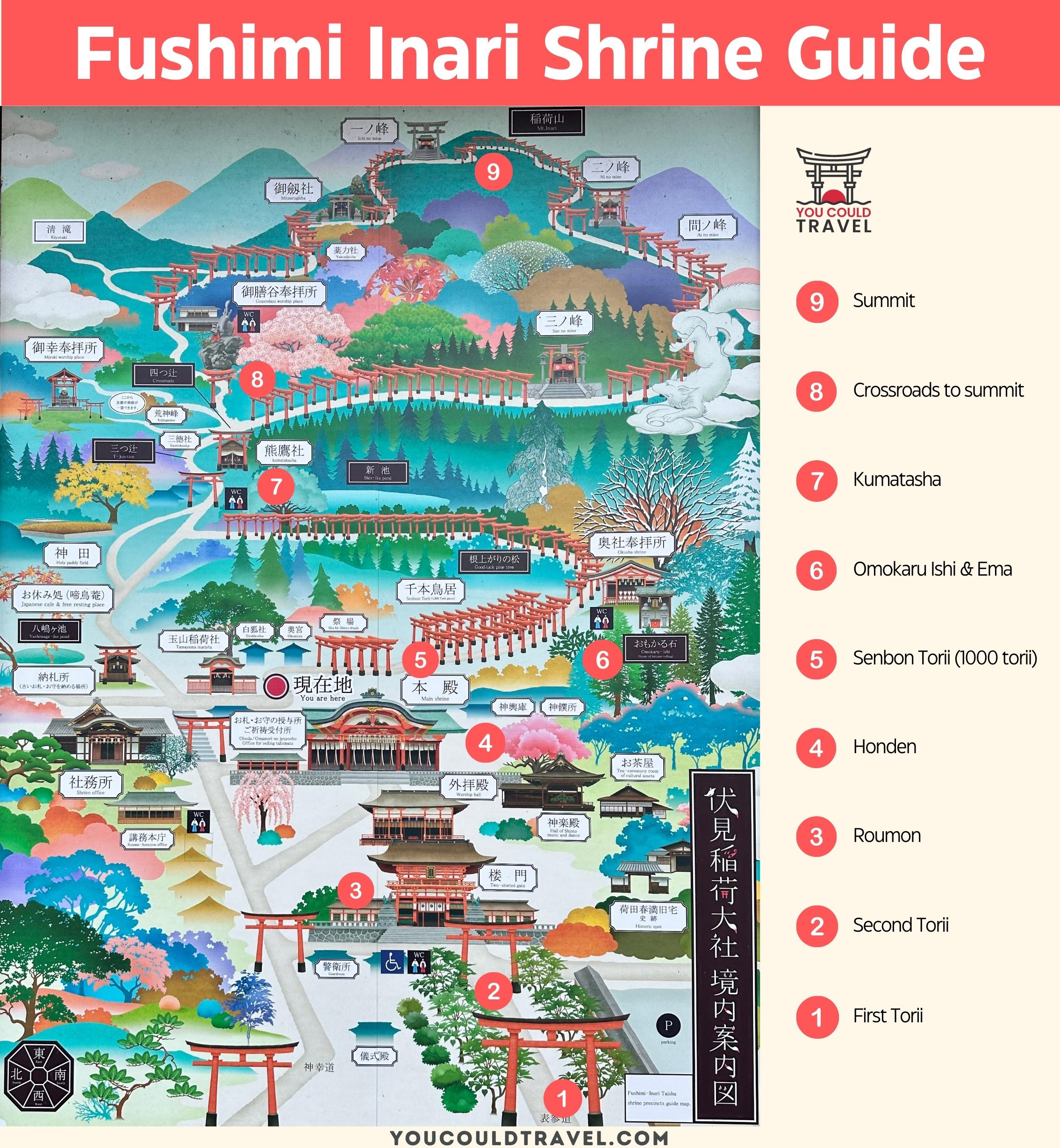
The main trail to the top of Mount Inari is approximately 2.5 miles (ca. 4 km) and takes around 2-3 hours to hike. It’s a relatively easy hike and can be done by anyone with an average fitness level.
You can take as long as you need, as there are no set rules here and if you get too tired, simply take a break along the trail. There are many resting areas and I definitely took advantage of them on my hike.
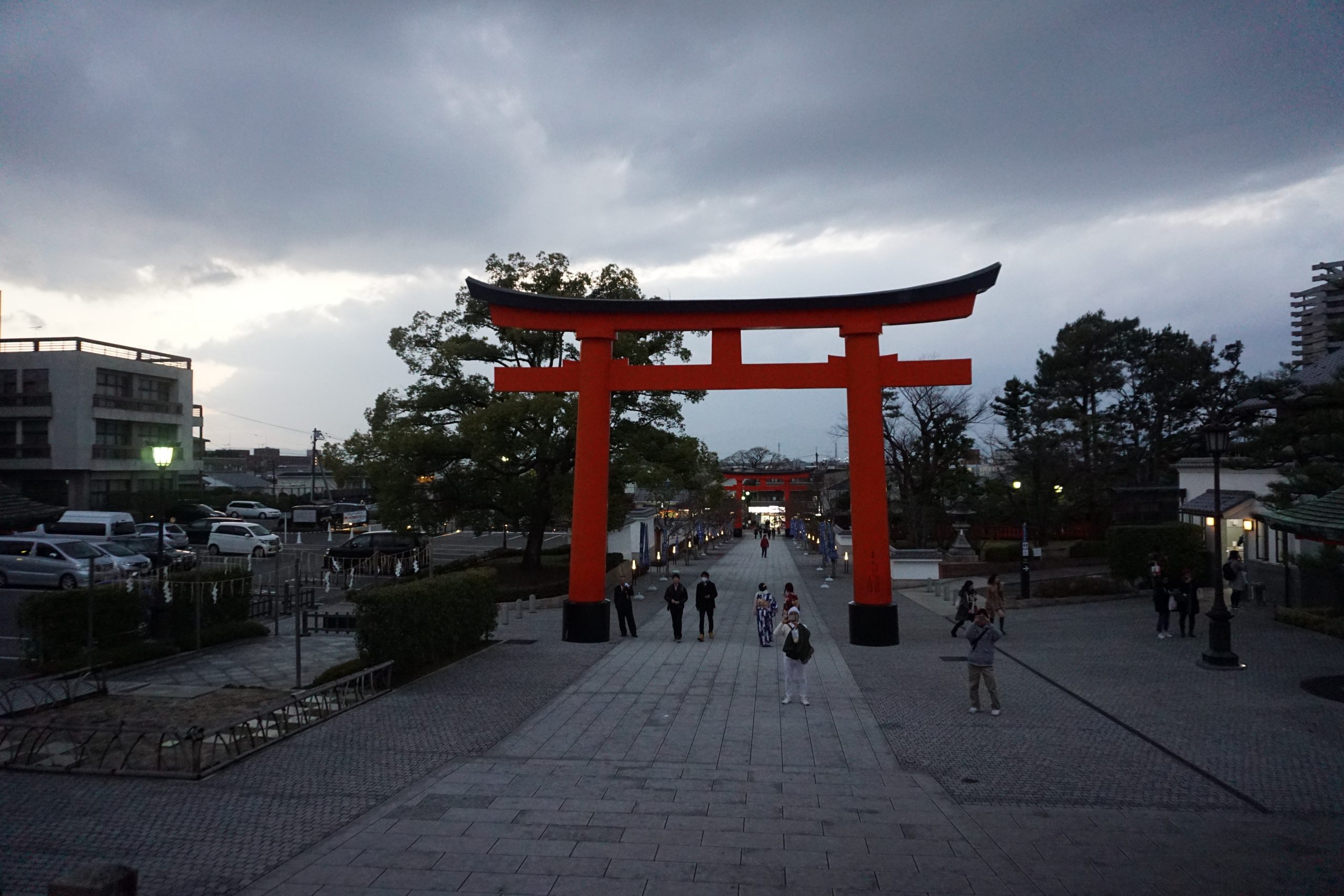
At the bottom of the mountain, you will see the main gate (rōmon) donated in 1589 by the famous leader Toyotomi Hideyoshi and the main shrine (go-honden). The inner shrine (okumiya) is reachable by hiking the path lined with the thousand torii gates.
In terms of amenities, there are some simple teahouses along the upper trails of the mountain for a rest and tea break. If you run out of water, there are vending machines along the path too, where you can buy water or hot teas, but these only take cash, so bring some Japanese yen with you. There are toilets at the beginning of the trail and two more up the mountain.
There is no fixed route and throughout times, pilgrims have created their own path with certain stops along the way. As you start your hike you will immediately notice a split there the trail of torii gates divides into two separate paths. Take either, as these paths eventually lead up to the top of the mountain and rejoin each other along the way.
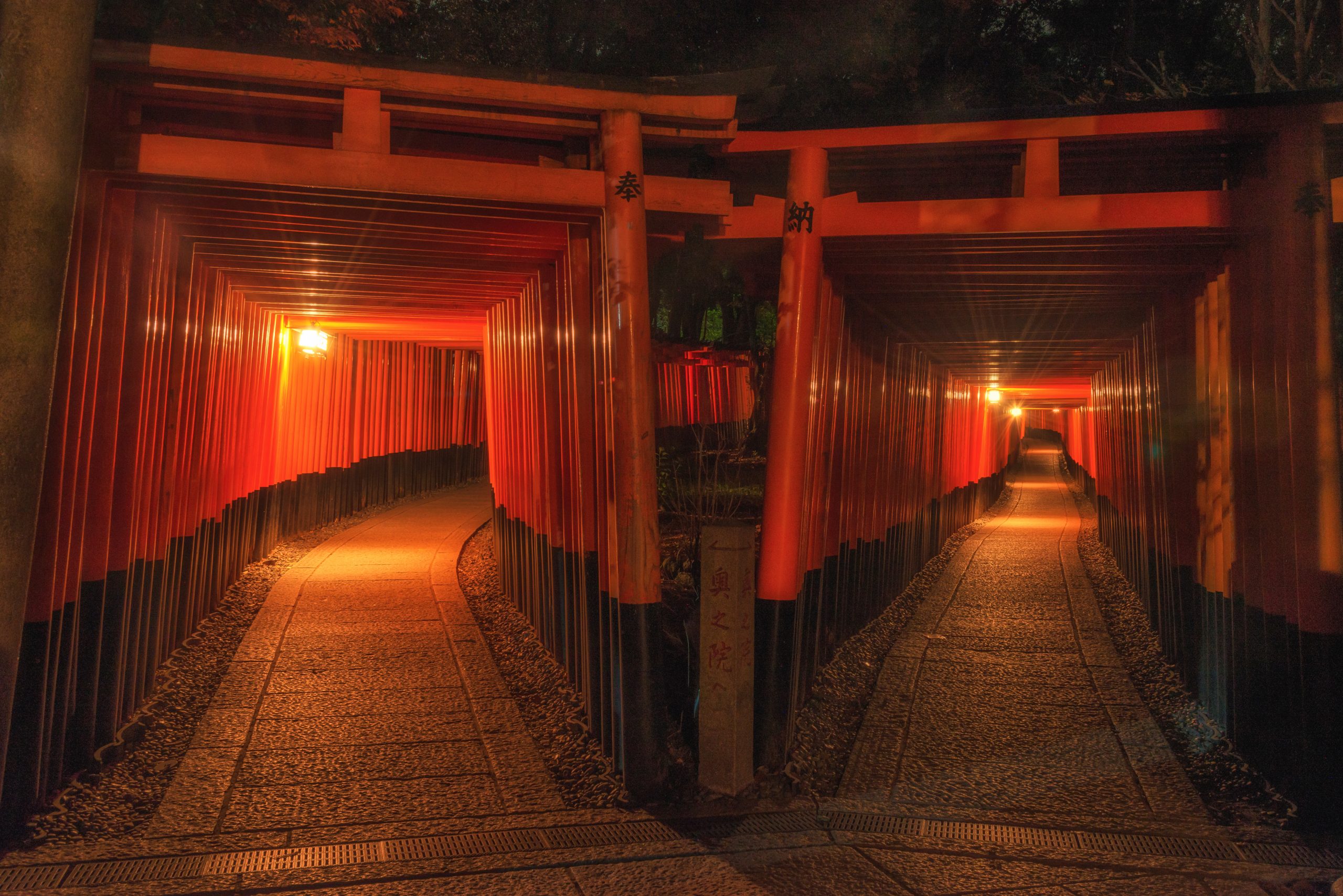
I hiked the path in Converse, and they were comfortable enough, but generally, I recommend a pair of comfortable walking shoes. Avoid heels as some parts of the terrain are uneven.
Bring some snacks and water with you, as you will need it, especially if you decide to hike in the midst of summer when it’s very hot and humid.
The trail can be steep at times, and you will need to climb stairs too, so please be mindful if you have mobility issues.
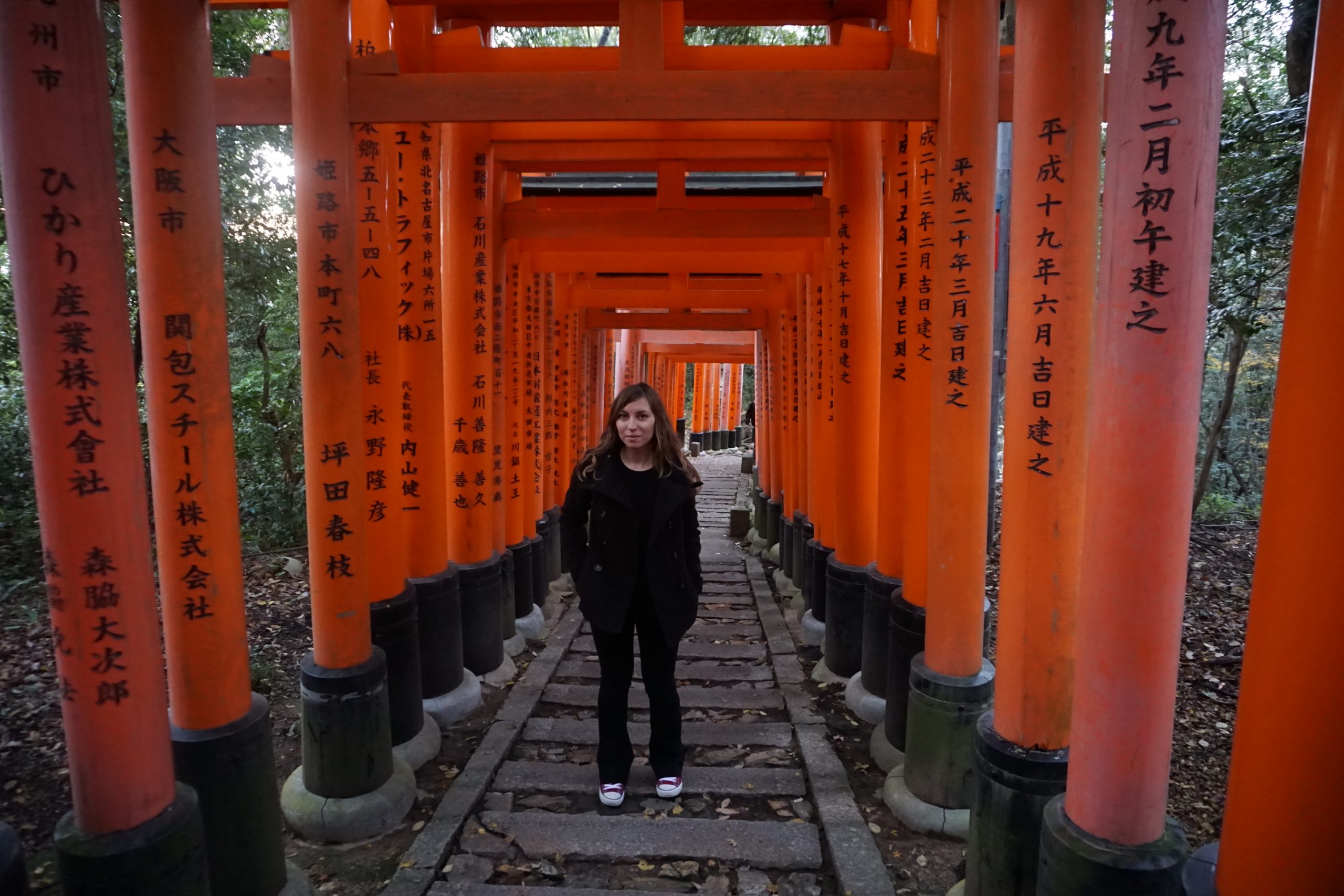
Along the path you will find small waterfalls, cedar trees and beautiful small rock altars. There is even a pond called Shin Ike. According to legend, if you stand in front of the pond at Fushimi Inari Shrine and clap your hands, you’ll hear an echo in response. The direction from which the echo returns is believed to guide you to someone who is lost.
While there are no specific sacred trees within the grounds of Fushimi Inari Shrine, it is believed that Inari dwells within each of the cedar trees growing on Mount Inari, making them important symbols of the Inari faith. The nature around the path is extraordinary and often time very peaceful and meditative.
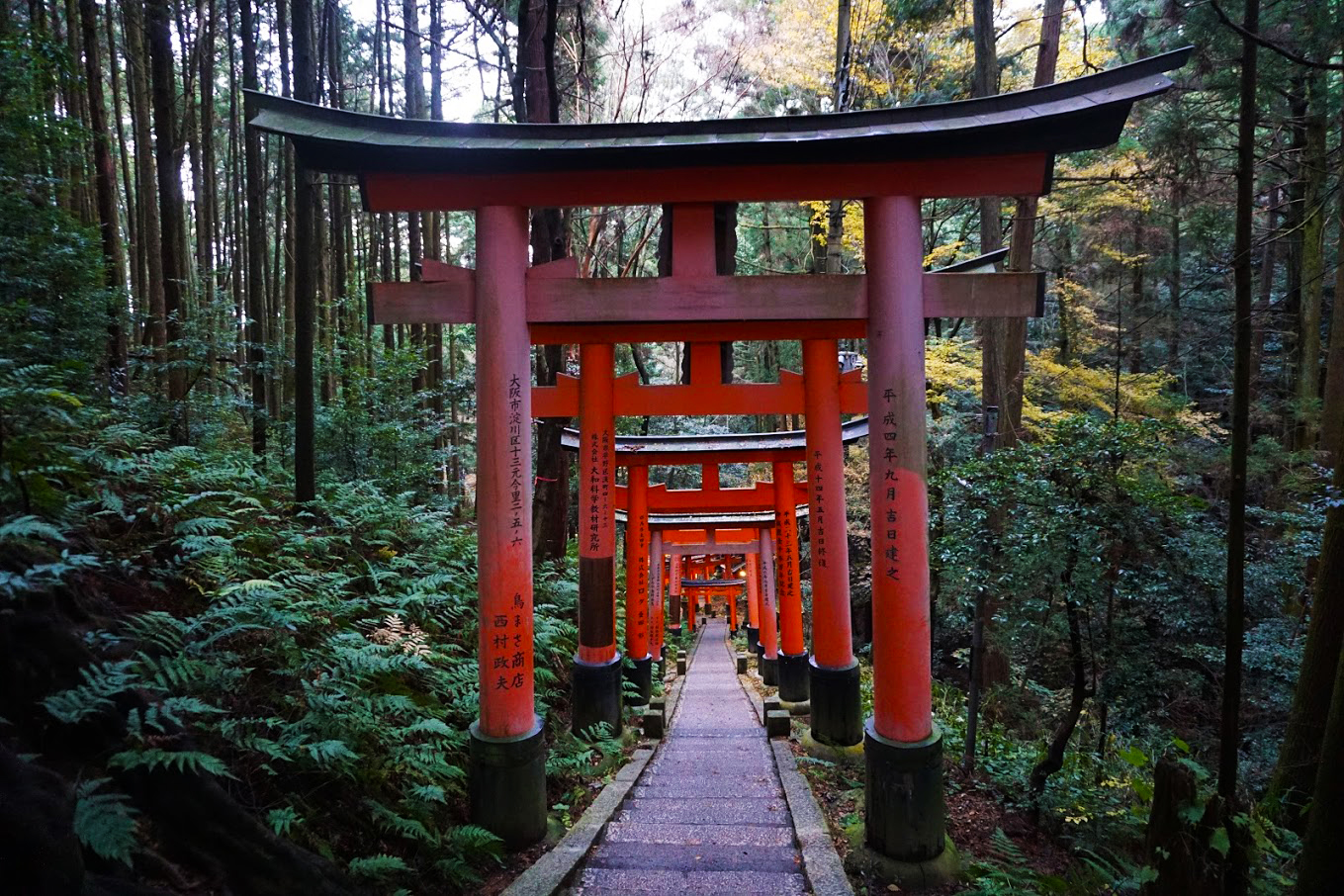
Reaching Yotsutsuji intersection
After around 30-45 minutes of ascend, you will get to the Yotsutsuji intersection, a perfect place with stunning views of Kyoto.
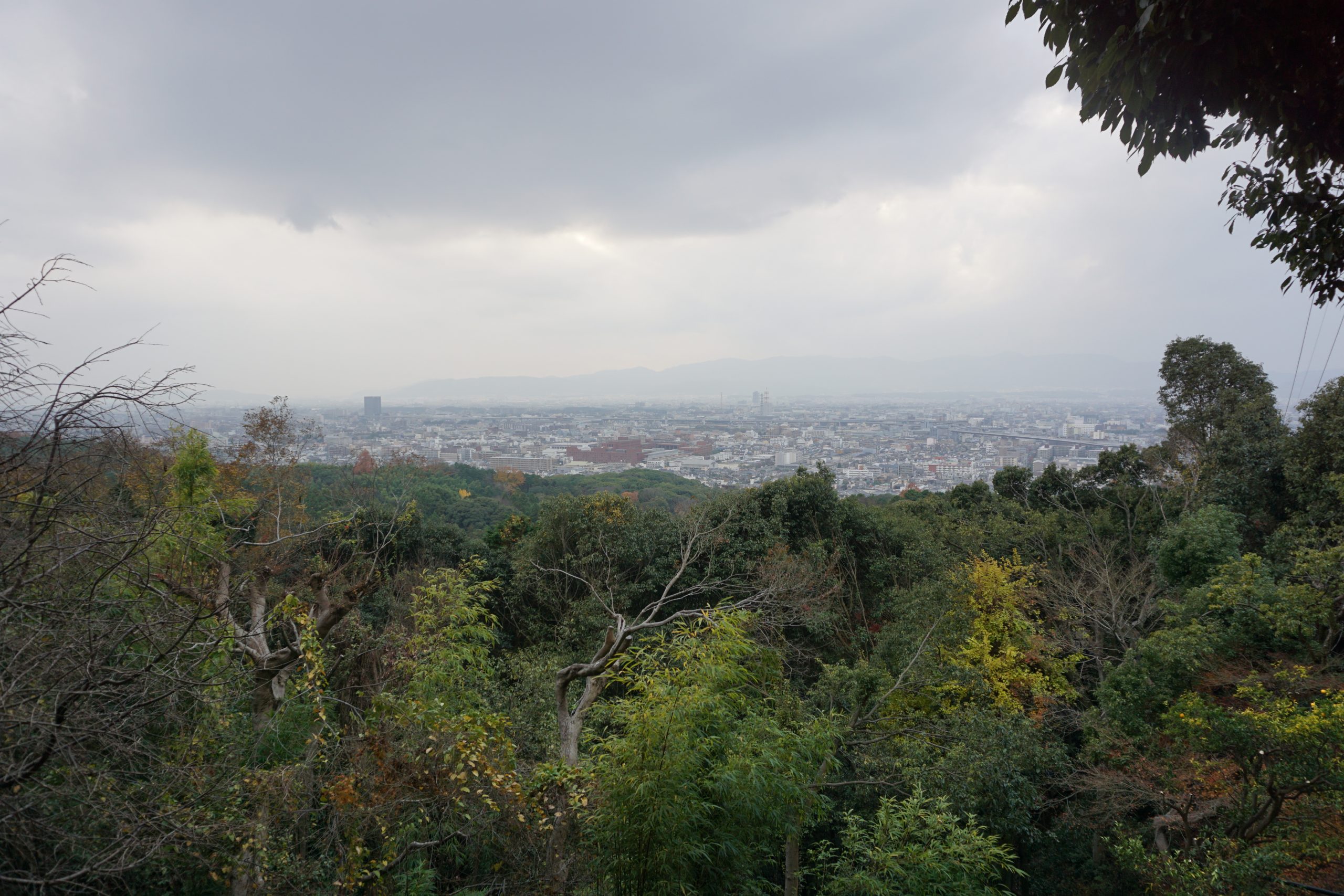
Most people tend to stop here at the Yotsutsuji intersection, but if you can, continue to the top. From the Yotsutsuji intersection, the trail splits into a circular route.
The top of the mountain
From Yotsutsuji to the top was my favourite part of the hike. The toriis here become huge, and the spacing between the gates progressively widens. Nature here looks rawer, too, which makes it more magical.
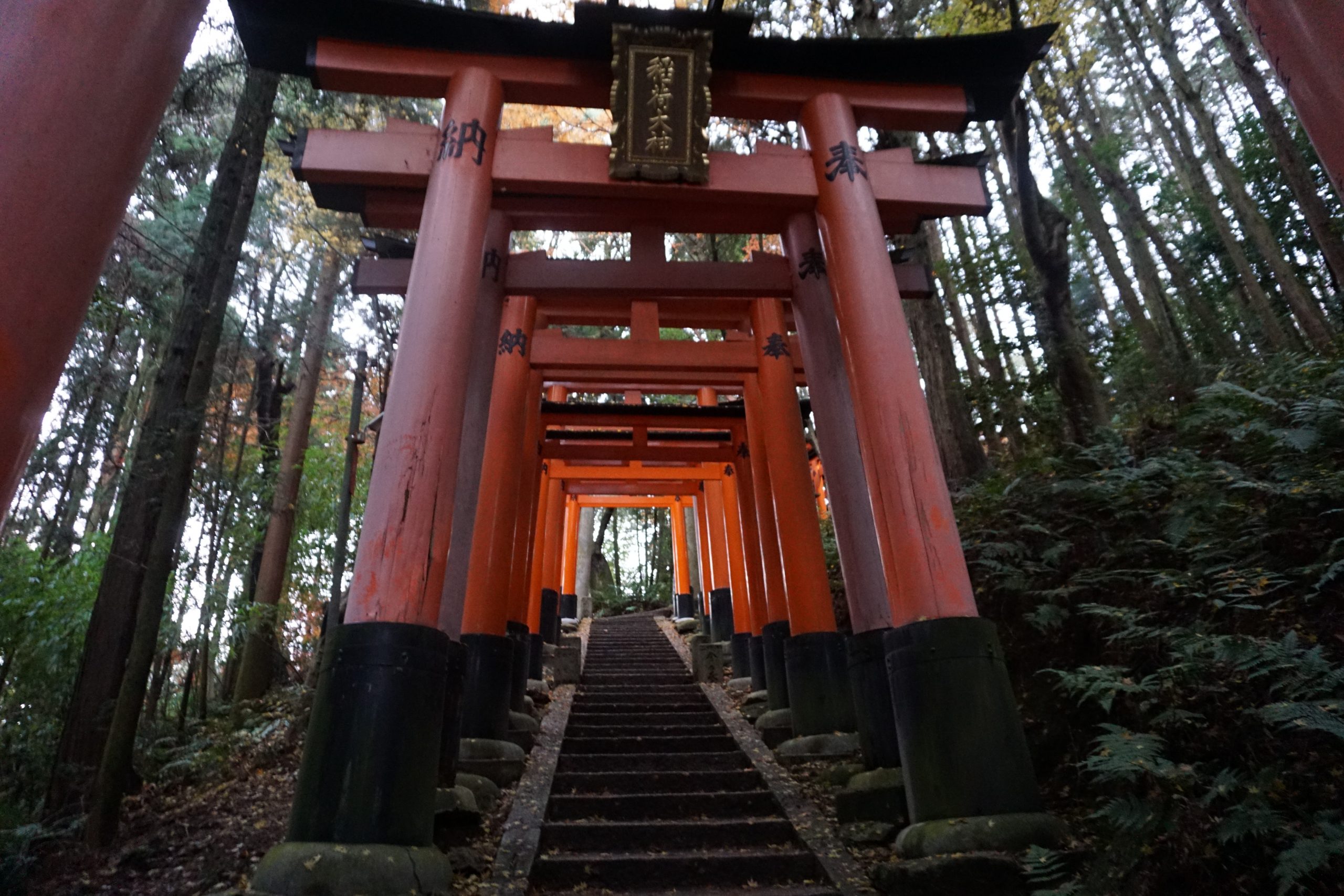
Don’t make the same mistake I made, and expect stunning views over Kyoto when you reach the top of Mount Inari. At the top, there are thousands of tsuka (mounds) for private worship and the view over Kyoto is obscured. You can grab a drink from the vending machine and take a moment to rest before beginning your descent.
Once you are back at the entrance of Fushimi Inari Shrine, take advantage of the street food stalls and treat yourself with something delicious, you’ve earned it!
What are the torii gates at Fushimi Inari Shrine?

All torii gates along the path at Fushimi Inari Shrine have been donated by Japanese companies in the hopes of receiving prosperity. Donations of torii gates started from Edo period. The inscription on the back of the gates represents the name of the donor and can be seen when you descend from the mountain top back towards the main gate. To be able to donate a gate, the cost is anywhere between 400,000 yen for a smaller gate to over 1,000,000 yen for a large gate.
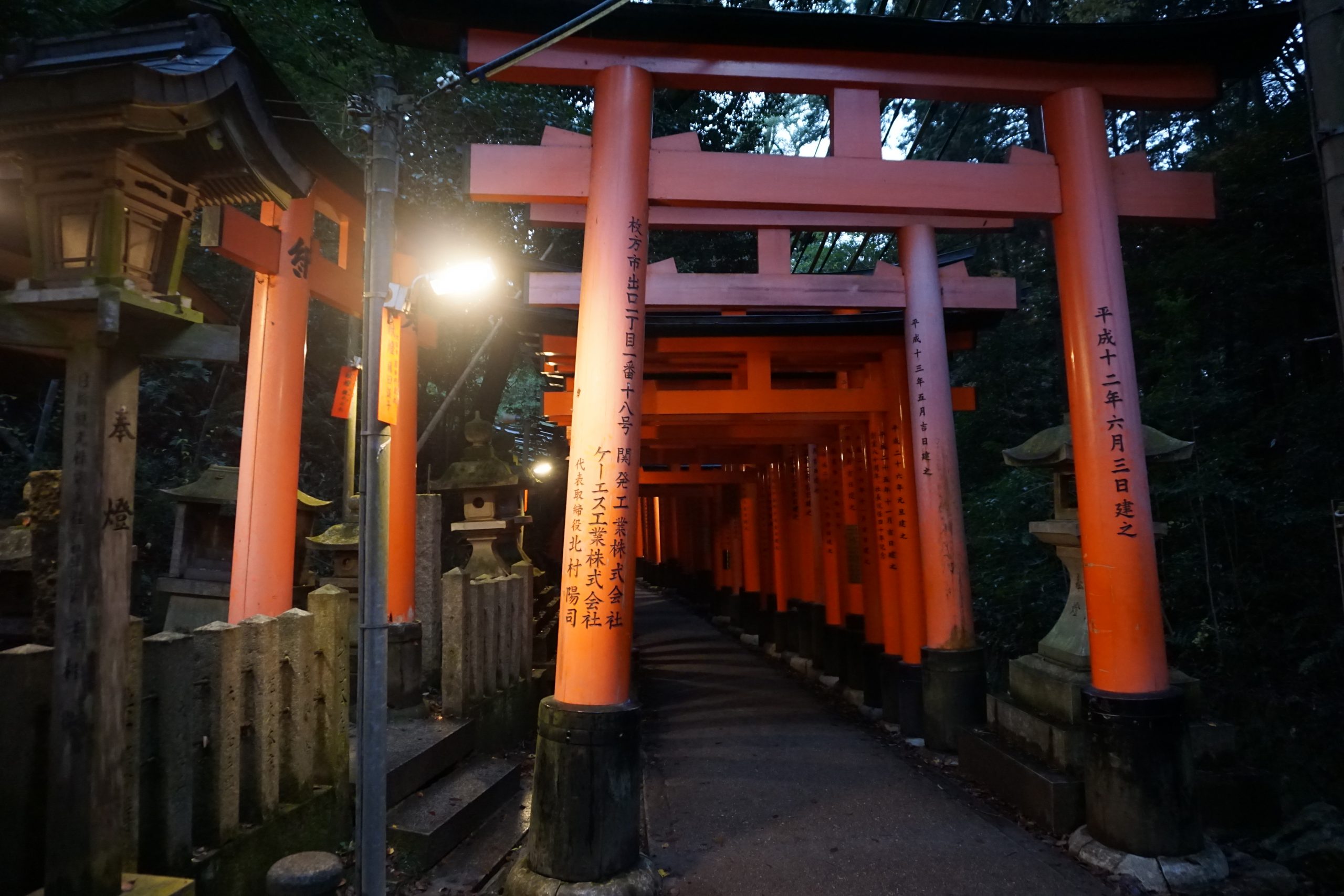
A torii gate is said to be the division between the physical and spiritual worlds. The Senbon Torii are painted a vermilion red (shuiiro in Japanese). In Japan, vermilion is considered a colour that protects against evil and misfortune.
The vermilion paint used on the wooden gates is a special mixture of mercury and red earth, used since ancient times. This unique blend serves the purpose of safeguarding the gates from the effects of weathering and potential damage caused by insects.
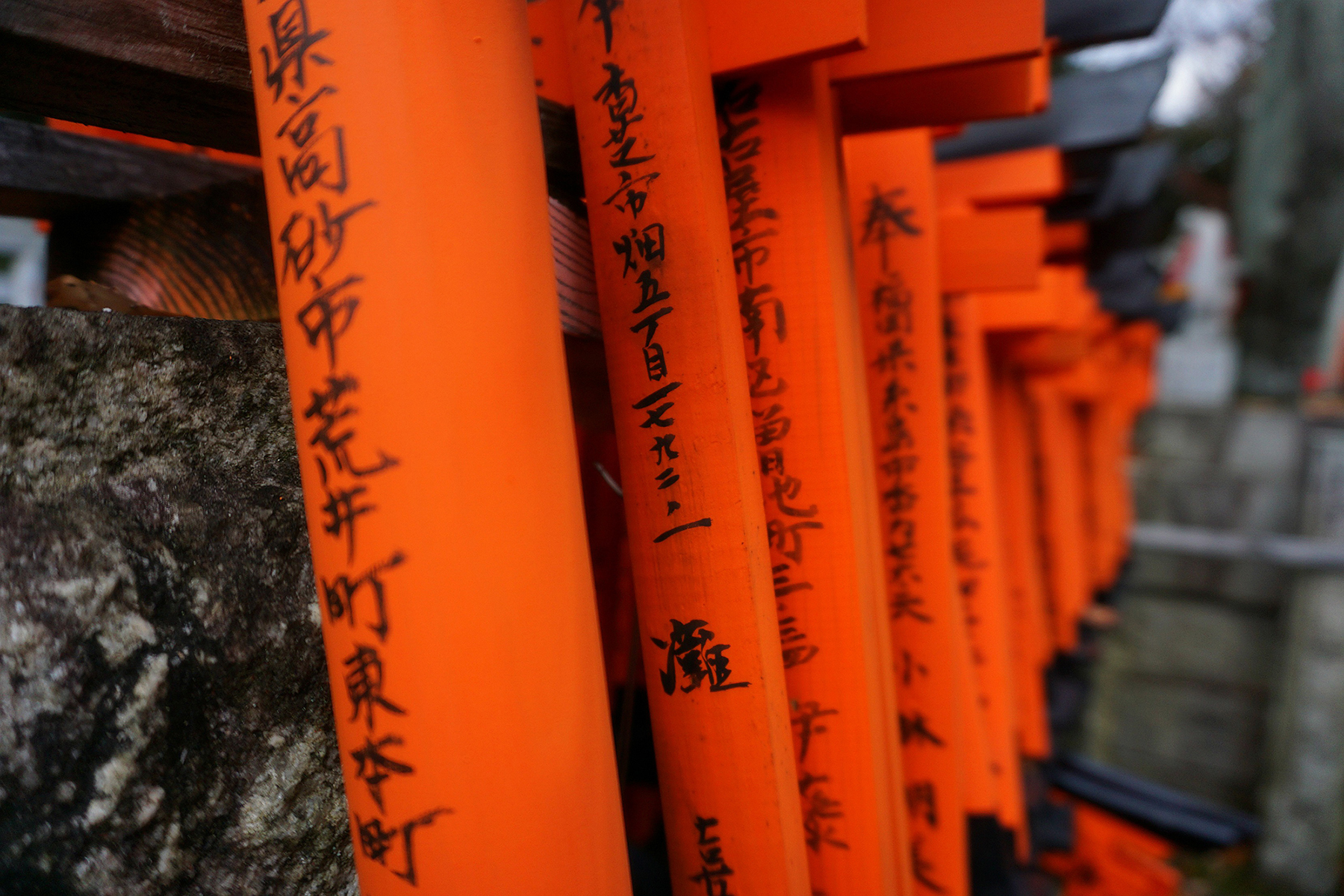
What are the foxes at Fushimi Inari Shrine
As you walk along the path of Fushimi Inari Shrine, you’ll notice numerous kitsune (fox) statues. These are there because white foxes are considered messengers of Inari.
Because of the association of Inari with the kitsune, some assume that the fox statues are an actual representation of Inari itself. This, is, in fact, false. According to Inari scholar, Karen A. Smyers in her book My Own Inari: Personalization of the Deity in Inari Worship, both Shinto and Buddhist priests hold that Inari and the foxes are separate entities.
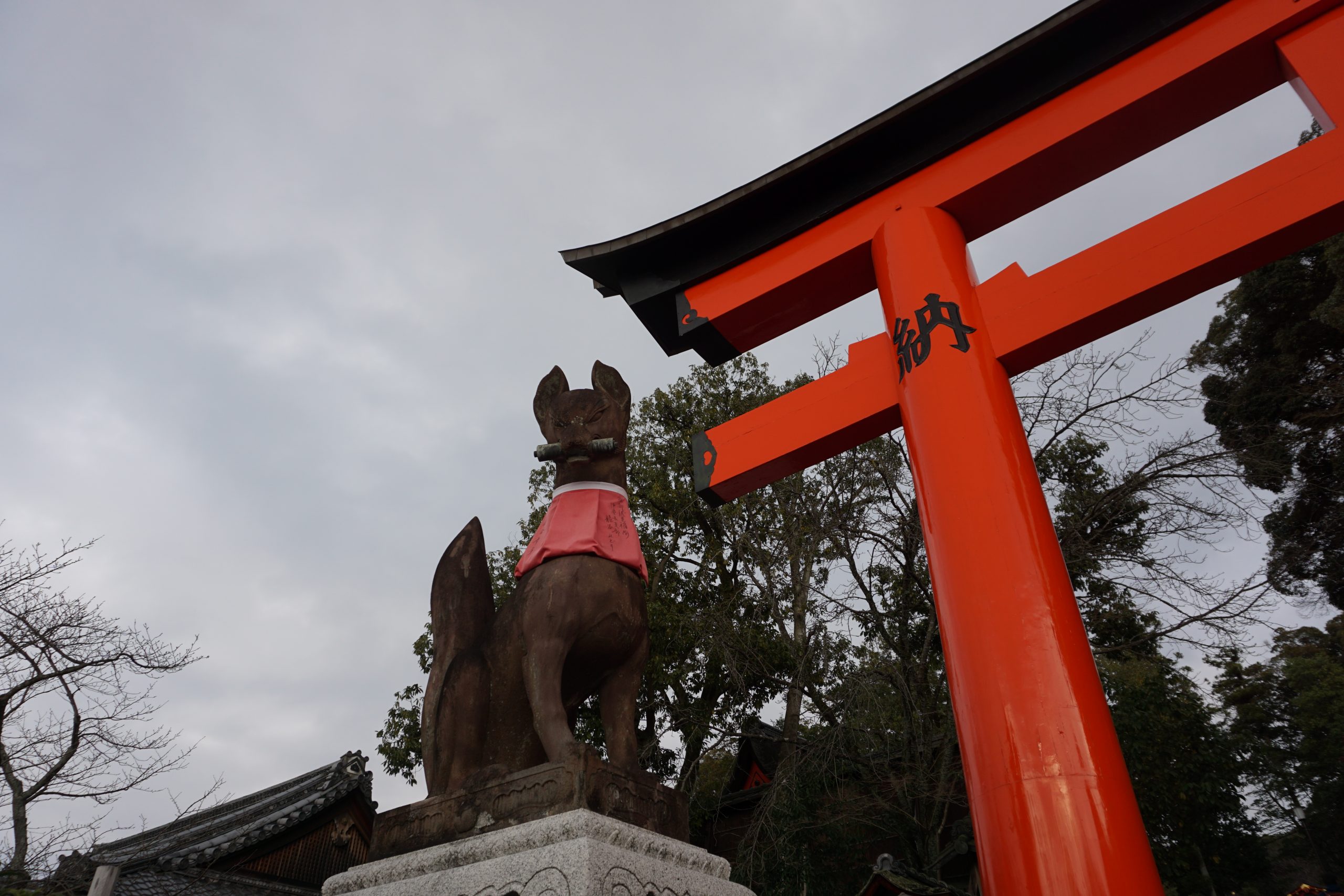
Along the path, I came across many of the kitsune statues adorned with red yodarekake (votive bibs). These bibs are thought to ward off demons and illness, symbolising the kitsune’s devotion to Inari. Pay close attention to the kitsune statues, and you will also notice that they hold symbolic items in their mouths or under a paw, such as a key (for the rice granary), a sheaf of rice, or a jewel.
Interestingly, some kitsune statues at the shrine have multiple tails. The number of tails a fox has signifies its wisdom, age, and power, with more tails indicating a more potent and venerable fox.
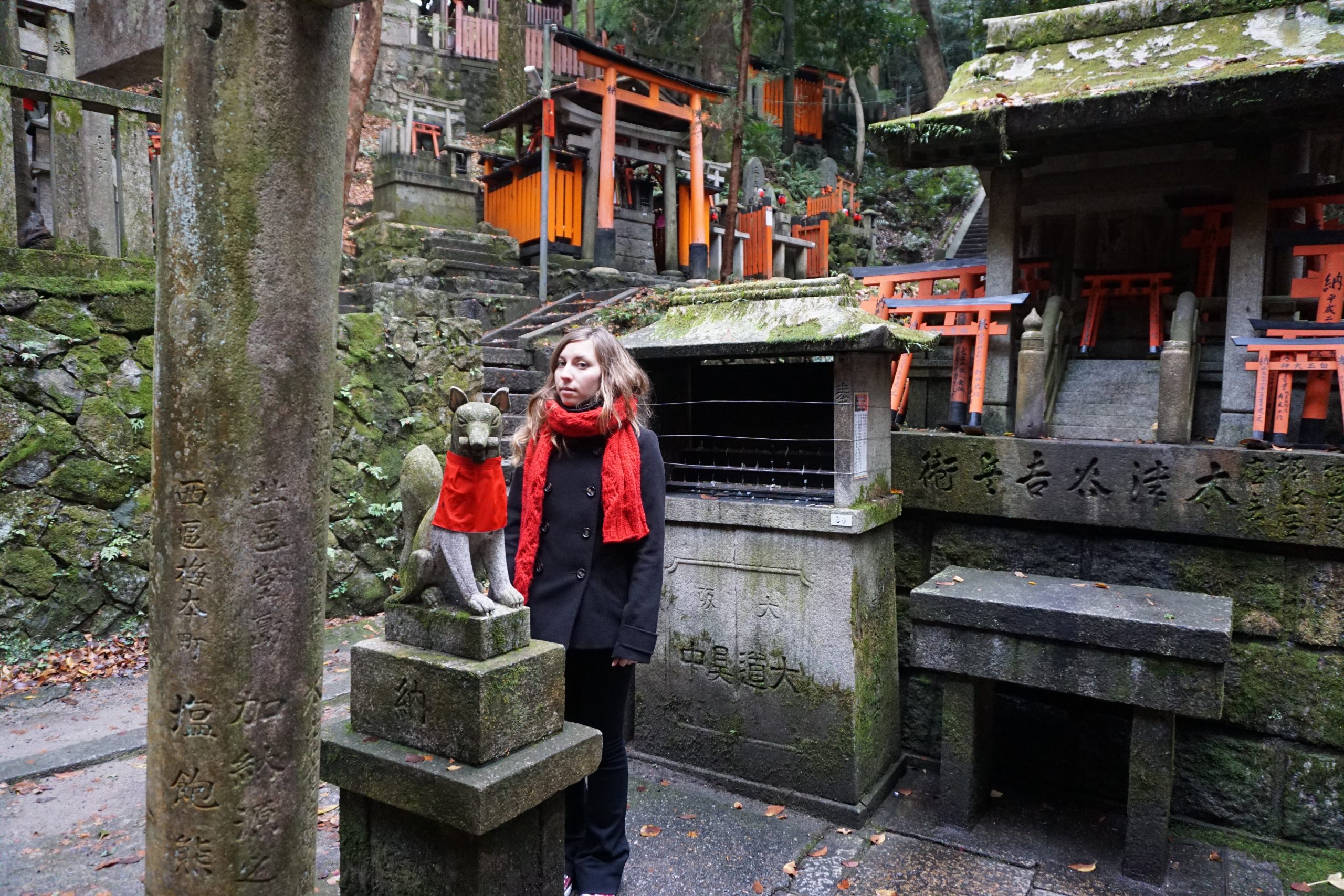
Food & Souvenirs
For street food, the stalls at Fushimi Inari Taisha will have plenty of delicious snacks. Try the Hashimaki Okinomiyaki which is a Japanese savory pancake on a stick. More something more substantial, try the yakisoba stir-fry and the prawn rice cracker with egg. Grilled salted fish on a stick is a personal favorite of mine, as well as grilled squid skewers. There are plenty of desserts too, including custard creams, red bean pancakes and my favorite, sweet potato fries.
For a sit-down meal, I recommend the following cafés and restaurants which have excellent and affordable food: Vermillion Cafe, Inarinadai Dohachi for Udon or Kyoto Shoryu for ramen. Try Kitsune Udon which is a noodle soup with seasoned fried tofu in dashi broth and topped with pink-swirl narutomaki fish cake.
Now that you finished the hike, you deserve a cute souvenir to remember your time here! Purchase a small ema torii prayer plaque or an omamori (Japanese shrine charm) at the main Fushimi Inari Taisha complex. I brought my little torii shaped ema home, and it’s now hanging above my front door, which I think it’s super cute.
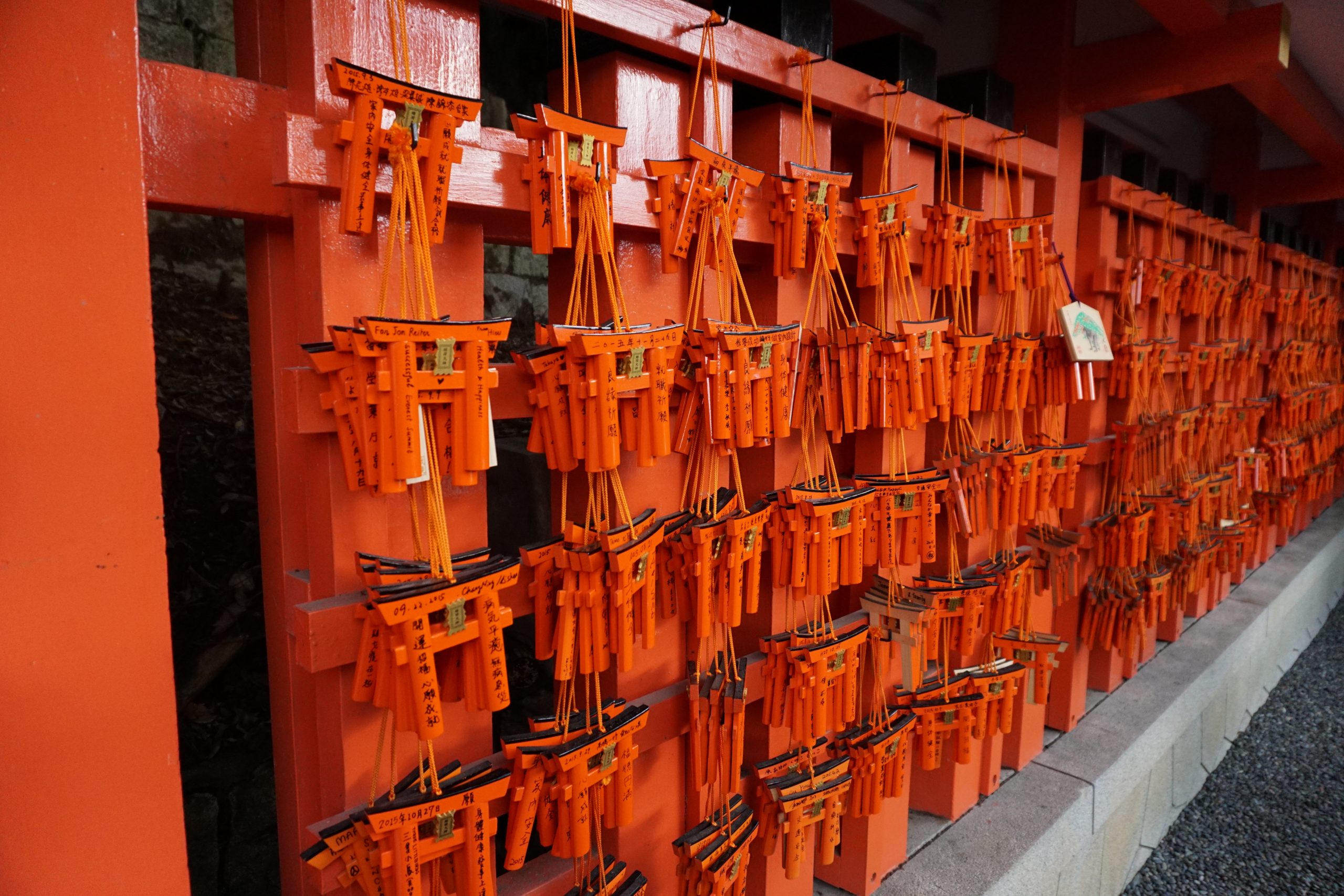
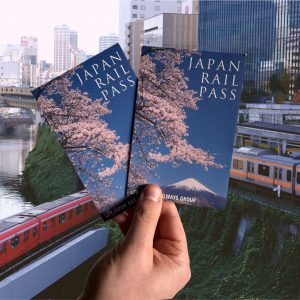
Japan Rail Pass
The optimal way to explore Japan is with a rail pass that is available for durations of 7, 14, or 21 days, offering unlimited travel across the country. Shinkansen included!
While Fushimi Inari Shrine is undoubtedly a must-visit attraction in Kyoto, there are other nearby points of interest that you can explore with your visit. Some notable attractions include the serene Arashiyama Bamboo Forest, the historic Gion district, and the iconic Kiyomizu-dera Temple.
Where to stay close to Fushimi Inari?
If you are interested in accessing the Fushimi Inari Shrine quickly, you might want to consider a hotel which is a few minutes walk away.
For a complete breakdown on all the important areas in Kyoto and reviews of my favorite hotels, read my where to stay in Kyoto article. I discuss different areas and why they are most suitable for your type of travel style and budget. I also recommend my favorite hotels in Kyoto organized by budget.
Enjoy a Japanese style room on a budget. This property has several rooms with shared bathroom. Maison Fushimi provides a laundry service, as well as business facilities like fax and photocopying. All units in the guest house are fitted with a coffee machine. Some rooms include a kitchenette with a microwave and a toaster. The units will provide guests with a fridge. Some rooms come with private bathroom for an extra fee. Prices start at £26 per night.
Minimalist design and art works are featured at Hotel Anteroom Kyoto’s rooms, restaurant and art gallery. It offers free Wi-Fi, as well as free-use internet PCs and bicycles. Kujo Station on the Karasuma Line is an 8-minute walk away, and JR Kyoto Station is only 1 station away.
Guests at Sakura Terrace will enjoy a complimentary welcome drink at the bar counter. The rooms have neutral colours and come with TV and fridge. All toiletries will be provided. Kyoto Tower is a 10-minute walk from the hotel, while Toji Temple is a 15-minute walk. The property is a 1-minute walk to the bus stop for Kiyomizu-dera Temple/Gion area, and a 3-minute walk to the bus stop for Kinkaku-ji Temple.
Tips for visiting Fushimi Inari Shrine
Visiting the Fushimi Inari Shrine is an enriching experience, but you do need to be well-prepared. Here are some tips based on my personal visit that will help your visit.
Visit at Dawn
To really capture the essence of the shrine, I recommend visiting at dawn. This timing helps avoid the crowds and aligns perfectly with the opening of food stalls, offering a rewarding experience after your hike.
Wear Comfortable Footwear
From personal experience, comfortable shoes are a must. While I initially hiked in Converse, I found that running shoes (New Balance) are better suited for the uneven, sometimes slippery terrain, especially after rain.
Prepare for the weather
Aim for a dry day to fully enjoy the hike. However, if you encounter rain, ensure you have a waterproof coat with a large hood to stay dry.
Don’t bring luggages
Avoid carrying a heavy backpack or any type of suitcase with you, as there are many stairs along the path. While the hike is easy enough for an average fitness level, a heavy backpack will slow you down and tire you quickly.
Bring your camera
For those interested in photography, you’ll find fewer interruptions and thinner crowds beyond the main gate. I’ve compiled a comprehensive photo guide to the Fushimi Inari Shrine for enthusiasts.
Be respectful
As Fushimi Inari is a spiritual site, it’s important to show respect during your visit. If you’re unfamiliar with local customs and manners, I suggest looking up some basic guidelines to ensure a respectful experience.
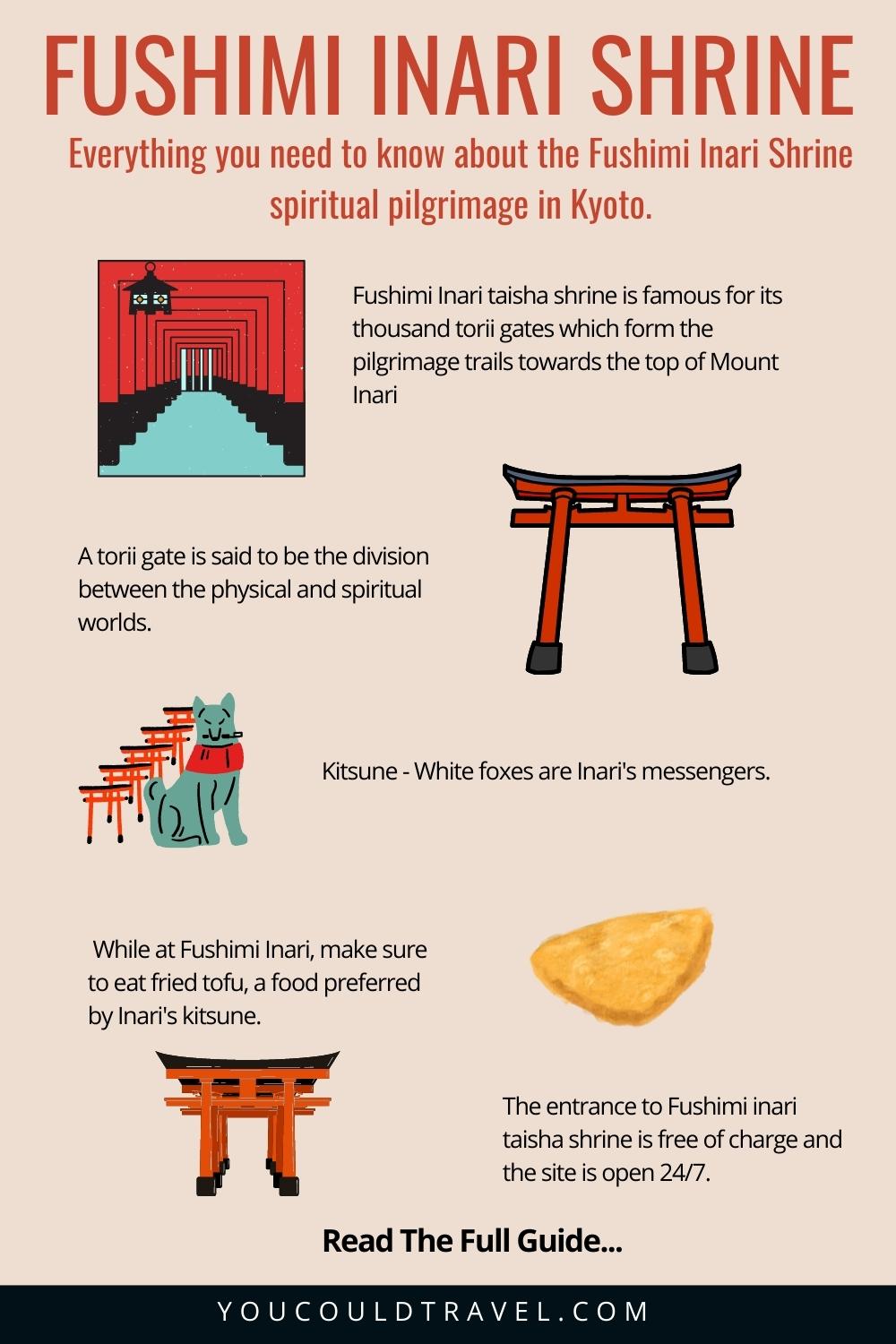
Frequently Asked Questions
What is Fushimi Inari shrine famous for?
Fushimi Inari Shrine is a famous landmark in Japan and well known for its thousands of vibrant red torii gates, known as Senbon Torii, which create a breathtaking pathway up the slopes of Mount Inari. Dedicated to Inari, the Shinto deity of rice, agriculture, and prosperity, Fushimi Inari attracts visitors seeking blessings and good fortune for their endeavors.
Fushimi Inari shrine is a popular pilgrimage site, where people embark on a spiritual journey, hiking through the torii gate pathways to reach the summit of Mount Inari. With its long history and recognition as an important cultural heritage site, Fushimi Inari showcases traditional Japanese architecture, including shrine buildings and sacred stone fox statues.
What is the myth of Fushimi Inari Taisha?
The origins of this myth can be traced back to the legend of Hata no Irogu, who used sticky rice for target practice. According to the legend, when an arrow pierced the rice, it would transform into a white bird and fly to the peak of Mount Mitsumine, only to change back into rice plants upon arrival.
The myth of Fushimi Inari Taisha revolves around the worship of Inari, a deity associated with foxes, rice, prosperity, and wellbeing. Inari shrines, both Buddhist and Shinto, can be found throughout Japan.
Inari shrines are known for their distinctive architecture, featuring vermilion torii gates and fox imagery. Offerings such as rice, sake, and food are made to appease the kitsune messengers associated with Inari.
Is Fushimi Inari better in the morning or afternoon?
Fushimi Inari Shrine is better in the morning. To avoid crowds, I recommend visiting Fushimi Inari Shrine as early as 7am. Fushimi Inari Shrine is open 24/7, which means you can arrive as early as you wish. Dawn in Kyoto can be anytime between 4 am (summer solstice) and 6:30 am (winter solstice). This means that by the time you start your hike at around 7 am, there will already be light. Depending on when you visit, you might even be there on time for a beautiful sunrise.
Reasons why visiting Fushimi Inari Shrine in the Morning is better:
Visiting in the morning may offer a quieter and less crowded experience compared to peak hours later in the day.
During the summer months, mornings can be cooler, providing more comfortable walking conditions.
The morning light is perfect for serene photography.
Starting your day with a visit to Fushimi Inari allows you to have more time for your Kyoto itinerary.
What is the dress code for Fushimi Inari?
There is no strict dress code for visiting Fushimi Inari Shrine, although the shrine specifically prohibits walking around the grounds in wedding dresses or other costumes that are inappropriate for worship.
Since this is a hike up a mountain, I recommend wearing modest and comfortable clothing. Wear comfortable shoes suitable for walking or hiking, as Fushimi Inari features a 4-kilometre trail up Mount Inari.
Please always be respectful within the shrine grounds, keeping noise levels low, avoiding littering, and following any specific rules or instructions provided. If at all possible, avoid selfie sticks, don’t leave strollers unattended apart from in marked areas, and don’t prevent worshipers from passing by taking photographs/filming on narrow paths.
How much time is needed at Fushimi Inari?
To get a good experience and explore the main highlights of the shrine, I recommend allocating at least 2 hours for your visit. This should allow you to walk through the iconic torii gate pathway, visit the main shrine buildings, and explore the lower portions of the mountain trail.
If you have more time and wish to hike to the summit of Mount Inari, where you’ll find additional sub-shrines and viewpoints, I recommend a total of 3 hours to visit |Fushimi Inari Shrine.
Can you go to Fushimi Inari at night?
Yes, you can visit Fushimi Inari at night. The shrine is open 24/7. If you plan to visit Fushimi Inari at night, be aware that the lighting conditions may be dimmer compared to daytime. I recommend bringing a torch or using the torch feature on your smartphone for better visibility, especially if you plan to explore the mountain trail.
It’s important to consider transportation options and ensure you can return to your accommodation safely, as public transportation schedules might be limited during late hours. Just remember to install a taxi app on your phone to have it handy.
How high is the Fushimi Inari hike?
The trail up Fushimi Inari Shrine consists of stone steps and pathways, and the total elevation gain from the base to the summit is approximately 233 meters (764 feet).

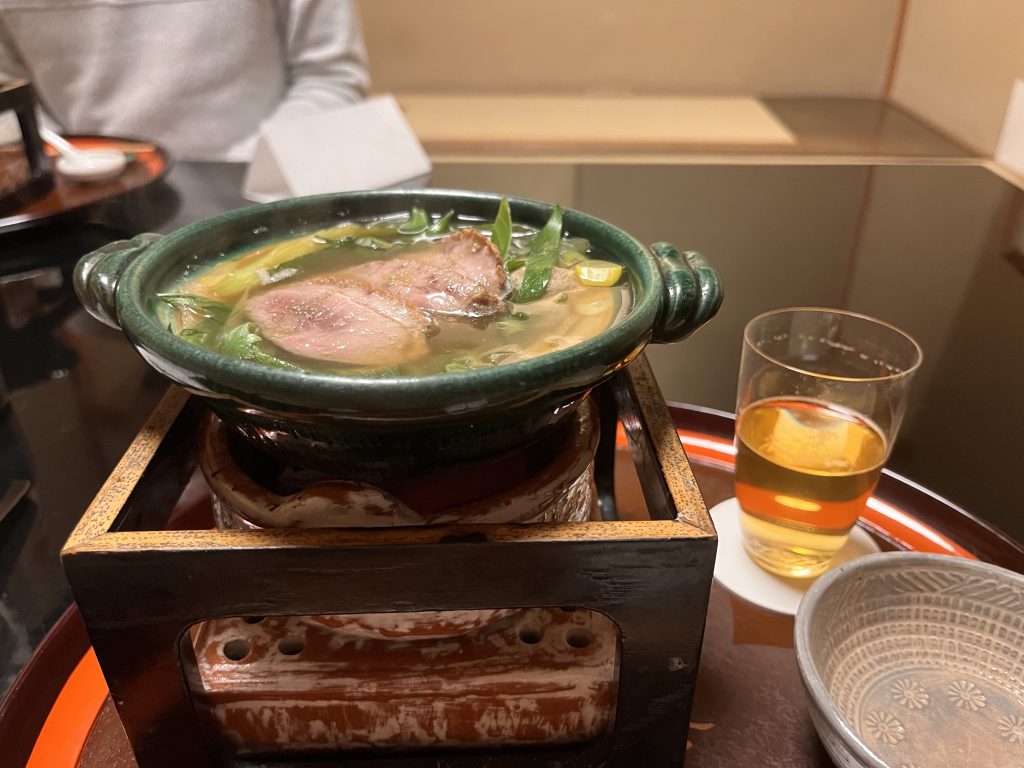
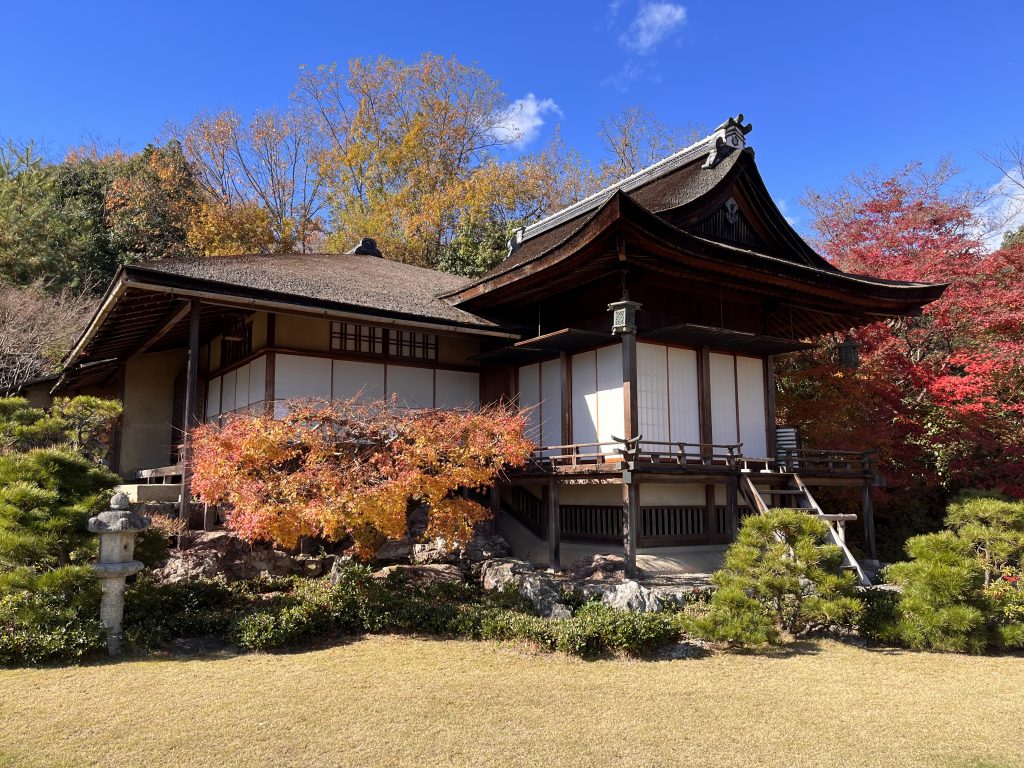
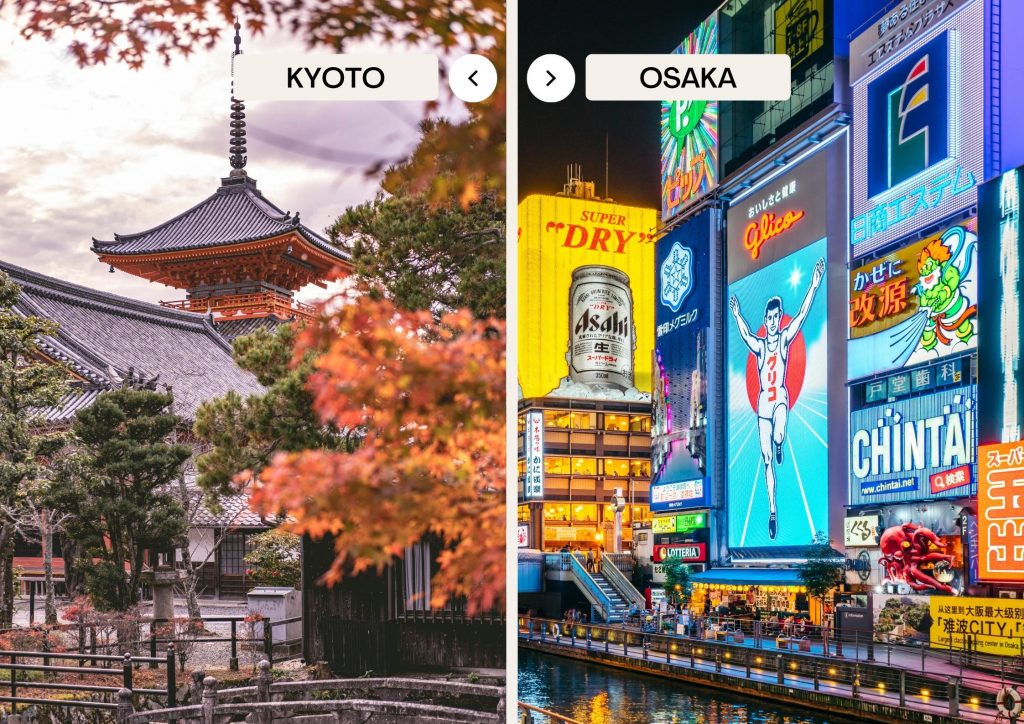
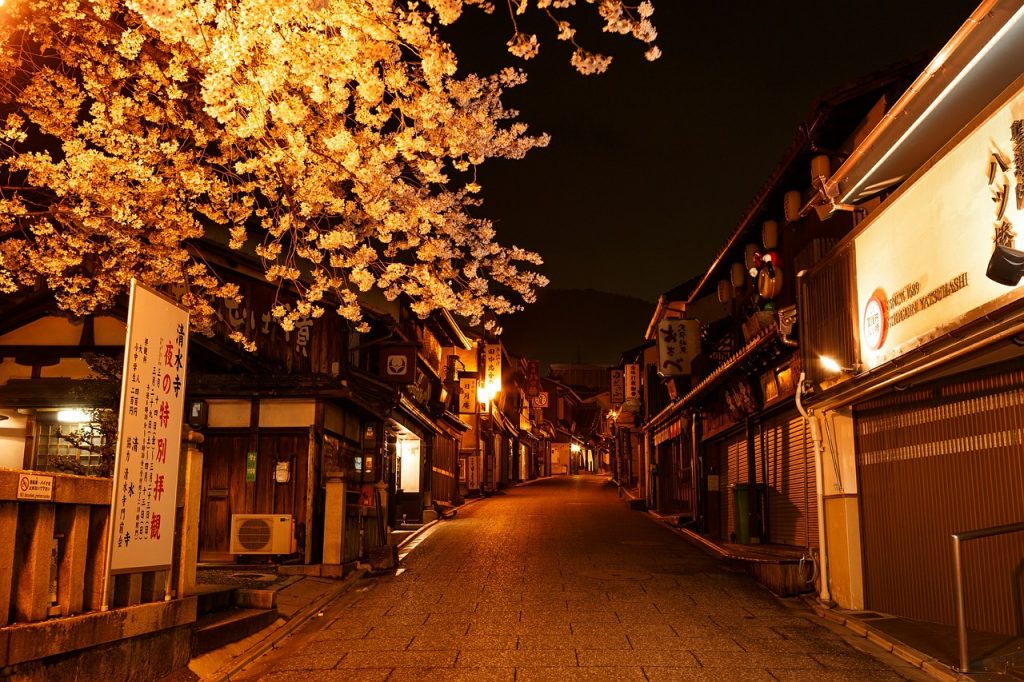
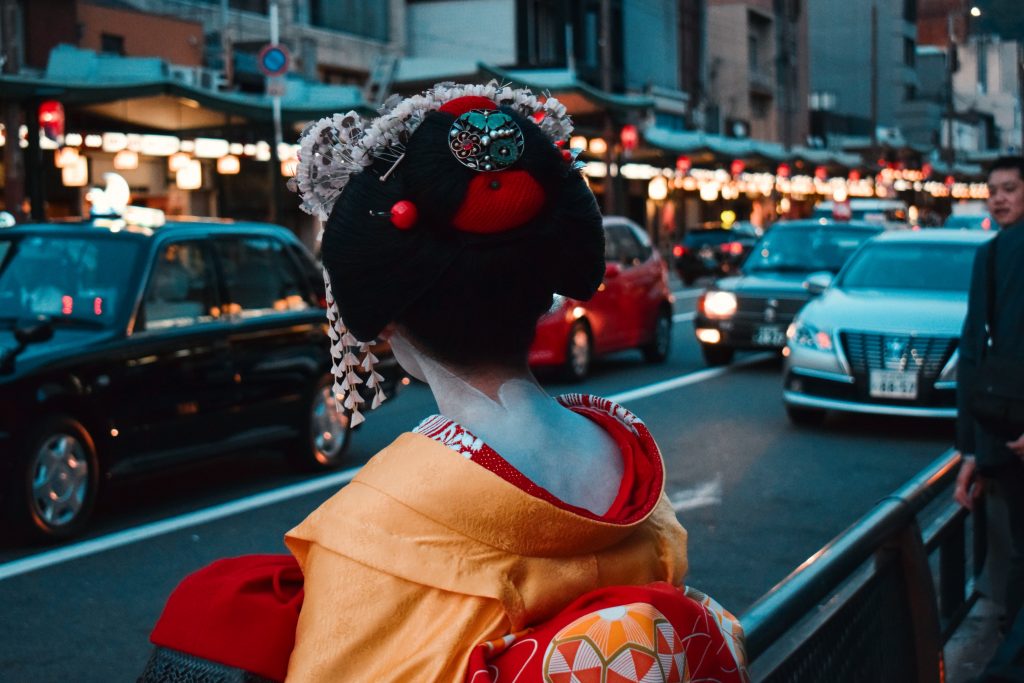
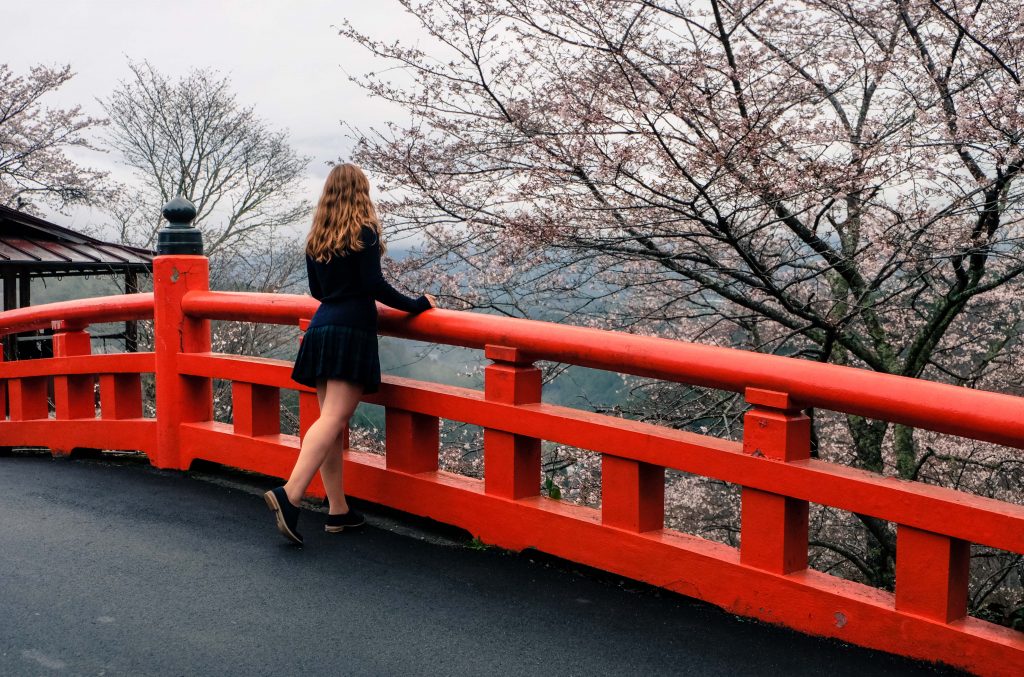
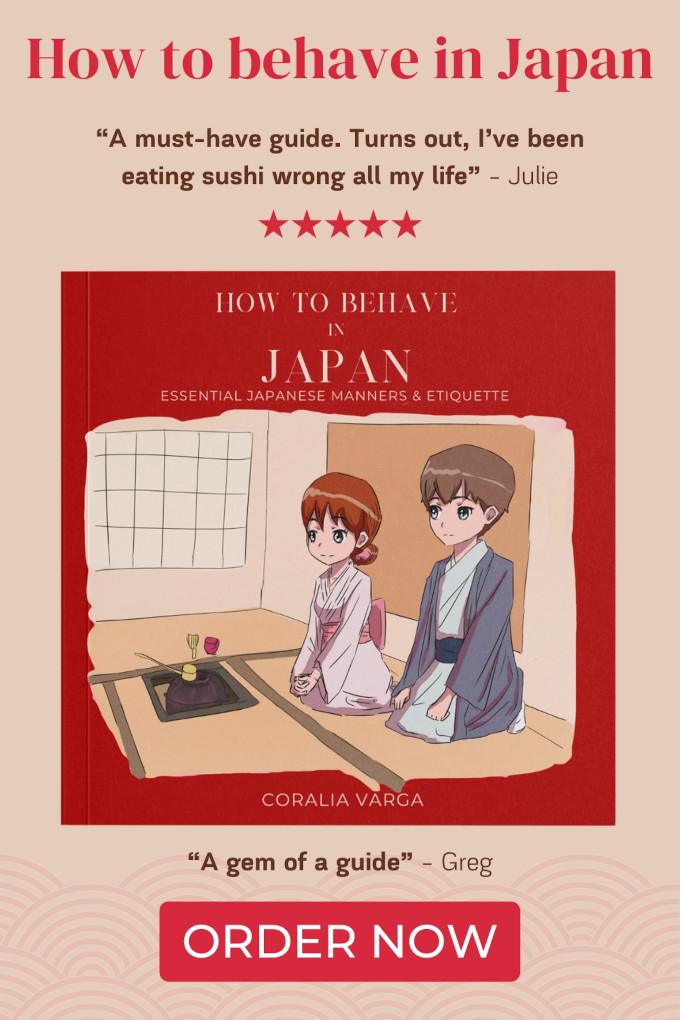

Leave a Reply